Types of Fish Habitat Structure
Habitat structures provide prey species with food and protective structure. Predator species are then drawn to these sites to take advantage of the available prey. This makes for great fishing opportunities.
Anglers can use the Habitat Structure Viewer to see the location and get the coordinates, structure type, and year installed for each set of habitat structures.
Many partner organizations have worked with TPWD to create and install habitat structures. Visit Friends of Reservoirs for more information about these collaborative habitat projects.
Below are some examples of fish habitat structure currently being used by TPWD and its partners.
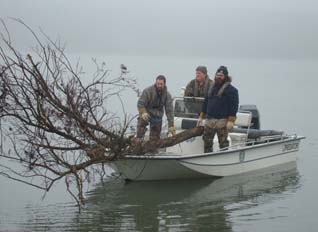
Brush reefs - Fish habitat can be made from recycled Christmas trees or from trees and brush cleared from ranches and park land. Trees are usually weighted with concrete blocks, individually or in bundles. If using Christmas trees, be sure to remove leftover ornaments, tinsel, or flocking, as these items can be harmful to fish.
On YouTube: Christmas trees at Stamford Reservoir
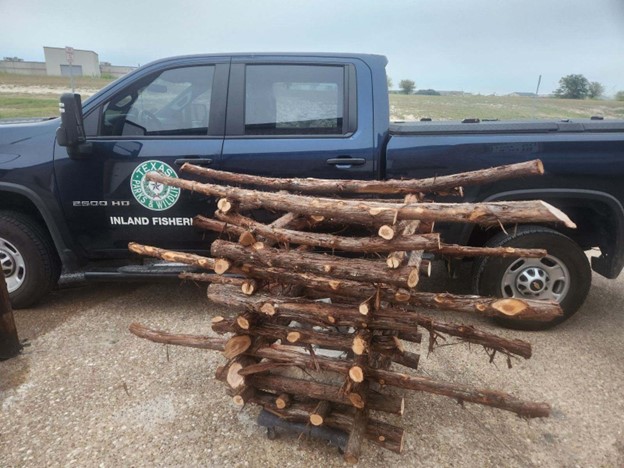
Texas Cedar Cribs – Longer, cut cedar staves held together with long, stainless screws make this structure a valuable, natural alternative to plastic habitat structures. Cube design allows for easy loading and retention of weight blocks. Small gaps between layers of cedar staves provide cover for small fish, while longer staves provide cover for larger fish around the exterior. Structure is largely customizable as height and width may be modified through addition, subtraction, or orientation of cedar staves.
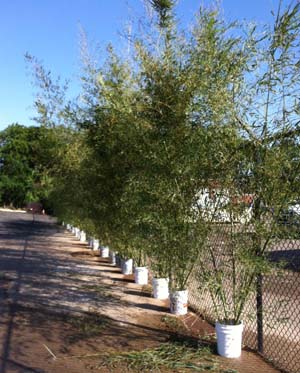
Crappie condos - Made with 3- to 5-gallon buckets, cut bamboo stalks, and concrete. These can be made in a variety of shapes and used in varying water depths, depending on the diameter and height of the bamboo cut. The weight of the concrete and air pockets in the bamboo keep the condos in an upright position underwater. Despite the name, these structures attract and hold forage and sport fishes of all types.
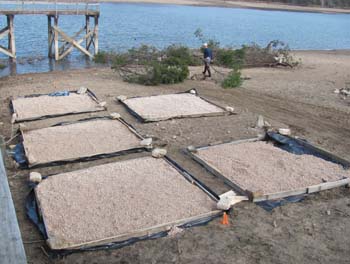
Gravel beds - Placed under piers or near bank fishing areas, gravel beds provide spawning habitat for sunfishes. They are composed of one-inch average diameter limestone or river gravel laid into a bed of 5- to 6-inch thickness in water two to six feet deep. Depending on the underlying soil composition, these structures may be lined to keep them from sinking in soft sediment. These beds will attract sunfish spring through fall.
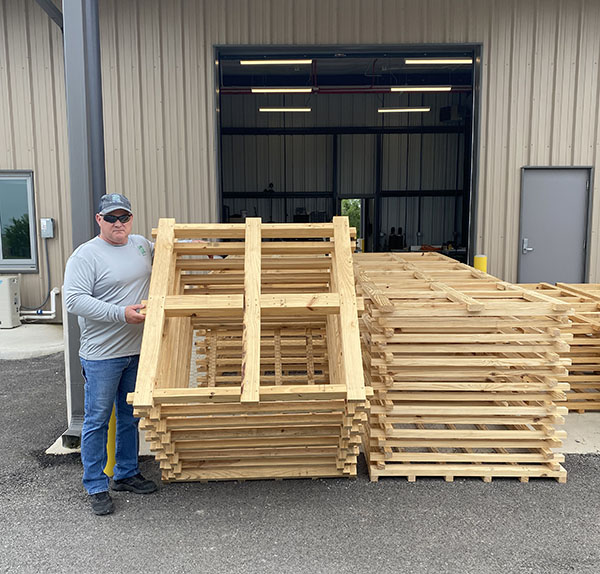
Pine wood cube - Similar to the Pennsylvania Porcupine Crib, these structures offer a natural alternative to plastic. Structures can be customized to any specification using ripped 2x4” boards and stainless wood screws. The cube design allows for easy handling, transport and weight addition to top. Variable spacing allows tight spaces for smaller fish and larger spacing for ambush predators.
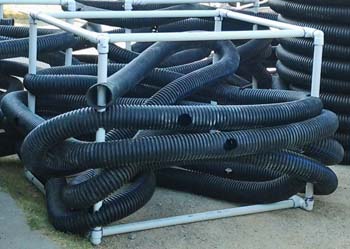
PVC cube - Developed by the Georgia Department of Natural Resources, these structures have a square PVC pipe frame with plastic corrugated drain pipe looped through it. This creates tight spaces for small fish, while also providing bigger spaces for larger fish to hang out and ambush the smaller fish.
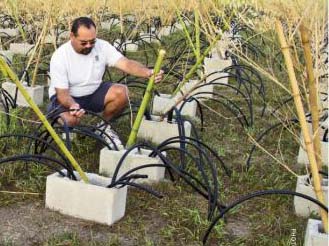
Spider blocks - Consists of a horizontal cinder block with PVC pipe, bamboo stalks, and irrigation tubing inserted. Quick-set concrete cements it together.
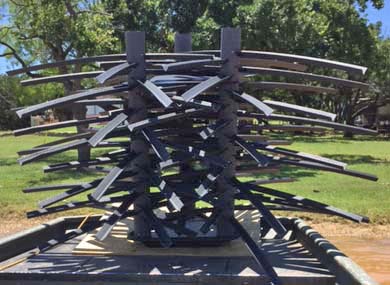
Store-Bought Structure - Fish habitat is also available on the commercial market. Some companies have partnered with TPWD to deploy these devices in various configurations.
On YouTube: Lake Buchanan installation